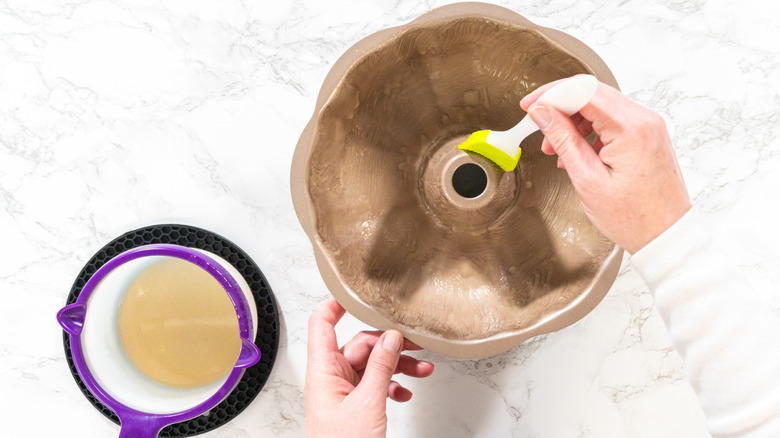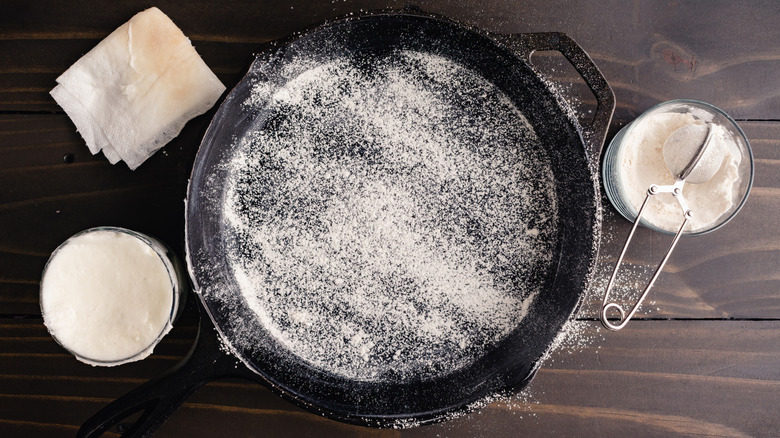Why Using Butter To Grease A Cake Pan Can Be Problematic — And What You Can Do To Make It Work
If there's anything anyone can take away from cooking shows like Netflix's baking competition "Nailed It!," it's that greasing the cake pan is just good practice. While not always necessary, not doing so can lead to disastrous results. Namely, sticky pan walls destroy all your hard work. While butter might be a popular choice, drop that stick! It's essential in other baking aspects — such as adding richness and amping up the flavor with the infused variety — but it could also quickly work against you. Here, oils are the better options because they don't contain water. The preferred kind is vegetable oil since it has a very mild flavor. It's also the variety most used in cooking sprays.
What makes butter ineffective is that it's made from water and cream. Once heated, the water evaporates, and the leftover milk solids become sticky. This causes the cake to stick to the pan and do exactly the opposite of what's intended. Although an oil-based alternative is better, there are some factors to keep in mind: While neither contain water, canola and vegetable oil may pool in molded pans. Here, a non-stick spray that contains flour can utilize the oil's advantages and ensure a more even spread. As it's purely fat, shortening is another great option. Its higher melting point means it stays around longer, allowing it to provide a better barrier.
How to make butter work as a cake pan spread
While they may certainly be the better non-sticky options, vegetable oil and shortening won't help much in terms of flavor, whereas butter will. With this in mind, just try to use it sparingly to lessen the risk of stickiness. Following butter with a coating of nut flour can provide an additional dry border , and employing a nonstick pan would also assist in maximizing your efforts to keep your baked goods intact when you remove them. In any case, even if a lesser amount is being used, make sure to cover all the nooks and crannies of the entire pan.
Despite its difficulty serving as a grease barrier, there are ways to make butter more effective in this role. Tag-teaming butter with a non-stick oil spray can make up for when the water in the butter evaporates. Enlisting parchment paper alongside butter would also assist in imparting that rich flavor without the risk of a stuck-on mess. Ina Garten uses a brilliant hack for round pans, but the baking paper would ensure other treats won't cling to the pan as well. It can even help maintain those clean-cut edges for sweets like brownies. Just remember that the sides of parchment paper matter, so make sure the shiny side faces up, as this is where its nonstick coating is found.


